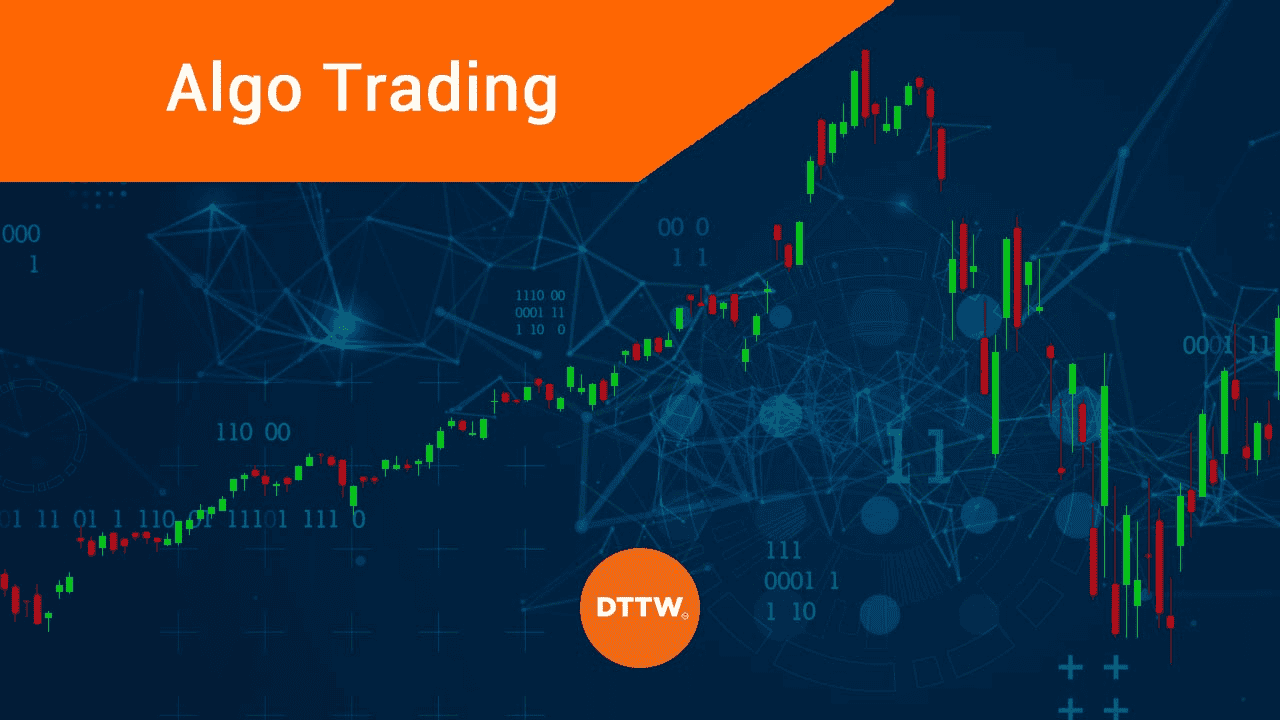|
Getting your Trinity Audio player ready...
|
The dynamism of the financial markets can be an overwhelming experience for budding traders. Choosing the right trading strategy plays a pivotal role in this. For example, often, the traders get bogged down between quantitative trading and algorithmic trading. Both have their own set of merits. However, the choice is based on financial goals and ease of use.
Quantitative Trading vs Algorithmic Trading: What’s The Best Choice for The Budding Traders
Implications of mathematical formulas and analytics are no longer limited to the IT domain. Its wide spectrum of applications has stunned everyone. One of the prominent use cases of mathematical formulas is in the field of trading.
Trading is one of the most popular choices of every individual who wants to make good money. Besides, it is a great investment tool. However, success in trading is not limited to speculations. Rather, it is a calculative move that traders make that eventually bestows them with huge profits.
In the fast-paced world of financial markets, traders are constantly seeking an edge to gain an advantage over their competitors. This often comes in the form of mathematical technologies that enhance decision-making, reduce risks, and improve profitability.
This article will provide an in-depth look at the top mathematical technologies that traders use today, covering quantitative trading vs algorithmic trading and other aspects.
Quantitative Trading vs Algorithmic Trading
Are the traders mathematicians? To some extent, the answer is yes. The way the market moves, the stocks perform, and understanding the previous trends play a pivotal role in ensuring success in trading.
So, if you too gain expertise in the key mathematical formulas that impact trading work, you too can make some good money. Quantitative trading and algorithmic trading stand out. However, they have distinct characteristics that set them apart.
Quantitative Trading
Quantitative trading is an approach that places a strong emphasis on mathematical models and statistical analysis. Traders who employ quantitative strategies rely on numbers, data, and quantitative research to inform their decisions.
These traders are often highly skilled in mathematics, statistics, and programming. However, the ones who are not well-versed in these aspects can switch to quantitative trading companies offering their services to investors who wish to trade but are new to the market.
Mathematical Prowess
Quantitative traders are typically well-versed in complex mathematical concepts. They use statistical models to analyze historical market data, identify patterns, and make data-driven predictions.
Precision and Consistency
The mathematical nature of quantitative trading minimizes the impact of emotions and human biases. Traders can make more consistent decisions based on their mathematical models.
In-Depth Analysis
Quantitative traders often engage in thorough research and backtesting to validate their strategies. This deep analysis ensures that their trading decisions are rooted in robust mathematical foundations.
Algorithmic Trading
Algorithmic trading, on the other hand, is all about automation. Traders who use algorithmic strategies and algo trading. This automation allows for rapid execution of trades with minimal human intervention.
Automation
Algorithmic trading is all about automating the trading process. Traders develop algorithms that execute trades based on predefined conditions. This automation enables swift and efficient trading.
Less Emphasis on Mathematics
While algorithmic trading involves mathematical models to some extent, it does not require the same level of mathematical expertise as quantitative trading. The focus is on creating rules for trading rather than in-depth mathematical analysis.
High-Frequency Trading

Algorithmic trading is well-suited for high-frequency trading, where large numbers of trades are executed in a short period. Automation allows traders to react quickly to market changes.
Tabular Representation of Quantitative Trading vs Algorithmic Trading
| Aspect | Quantitative Trading | Algorithmic Trading |
| Emphasis | Mathematical models and statistical analysis | Automation and predefined trading rules |
| Mathematical Expertise | Requires strong mathematical skills | Requires less mathematical expertise |
| Decision-Making | Informed by statistical analysis and research | Driven by predefined algorithms |
| Automation | Less reliant on automation | Highly automated trading process |
| Emotional Impact | Minimizes emotional influence on trading decisions | Reduces emotional impact through automation |
| Research and Backtesting | In-depth research and backtesting for strategy validation | Emphasizes creating and fine-tuning trading rules |
| Execution Speed | Execution speed may vary based on the analysis | Swift and efficient execution due to automation |
| Trading Frequency | It may not be as suitable for high-frequency trading | Well-suited for high-frequency trading |
| Skill Requirements | Requires expertise in mathematics, statistics, and programming | Focuses on programming and rule development |
| Human Intervention | Relies more on human decision-making | Minimizes human intervention in trading |
Five best trading algorithms examples
Moving Average Crossover Algorithm
This algorithm is popular among traders for its simplicity and effectiveness. It involves using two moving averages, typically a short-term and a long-term moving average.
When the short-term moving average crosses above the long-term moving average, it generates a “buy” signal, and when it crosses below, it generates a “sell” signal. This strategy is widely used for trend-following.
Mean Reversion Algorithm
Mean reversion algorithms aim to capitalize on the tendency of asset prices to return to their historical averages.
When an asset’s price deviates significantly from its mean, the algorithm generates a “buy” or “sell” signal, anticipating a reversion to the mean. This strategy is often used in range-bound markets.
High-Frequency Trading (HFT) Algorithms
HFT algorithms are designed for ultra-fast execution and capitalize on small, short-term price discrepancies.
They involve complex strategies and advanced technology to execute a large number of trades within milliseconds. These algorithms are favored by professional traders and institutions.
Pairs Trading Algorithm
Pairs trading algorithms involve simultaneously trading two correlated assets. When the price spread between the two assets widens beyond a predefined threshold, the algorithm generates a “buy” or “sell” signal to profit from the expected convergence of prices. This strategy is often used in equity markets.
Statistical Arbitrage Algorithm
Statistical arbitrage algorithms identify assets with correlated price movements. When these assets deviate from their historical correlation, the algorithm generates signals to buy the underperforming asset and sell the outperforming one. The goal is to profit when the prices revert to their historical correlation.
Quantitative Trading vs Algorithmic Trading: How To Choose The Right Option
Now that we’ve explored the basics of both trading strategies, it’s time to address the big question: which one is the best choice for budding traders?
Factors to Consider
-
Trading Goals
Consider your trading goals. Are you looking for short-term gains or a more long-term investment strategy? Quantitative trading may be better for short-term traders, while algorithmic trading suits those with a long-term outlook.
-
Risk Tolerance
Evaluate your risk tolerance. Quantitative trading can be riskier due to its complexity, while algorithmic trading typically offers more predictable outcomes.
-
Skill and Knowledge
Your level of expertise matters. Quantitative trading demands strong mathematical and programming skills, while algorithmic trading is more accessible to traders with basic coding knowledge.
Making the Choice
In the end, the best choice between quantitative trading and algorithmic trading depends on your individual circumstances. It’s essential to start with a solid understanding of the best algo trading strategy and quantitative trading strategies before venturing into the market.
FAQs
How is mathematics used in trading?
Mathematics is used in trading to analyze data, develop models, and make informed decisions. Traders apply mathematical concepts for risk management, technical analysis, and creating strategies, improving the accuracy of their trades.
What type of math do traders use?
Traders use various math disciplines, including statistics, calculus, probability theory, and linear algebra. These tools help them assess market data, calculate risk, and develop trading models.
Is trading based on mathematics?
While trading involves more than just math, quantitative trading strategies are heavily reliant on mathematical models. These models help traders understand market dynamics, identify trends, and optimize their decision-making processes.
Why is math important for traders?
Math is crucial for traders because it enables precise analysis, risk assessment, and strategy development. It helps traders make data-driven decisions, manage portfolio risks, and gain a competitive edge in financial markets.
Closing Thoughts
The above discussion gives an insight into quantitative trading and algorithmic trading. While quantitative trading employs statistical analysis and in-depth research, algorithmic trading emphasizes automation and predefined rules. Both strategies have their merits, and the choice between them depends on a trader’s skills, objectives, and the nature of the market they are operating in.
Whether you choose quantitative trading software or algorithm trading, remember that continuous learning and adaptability are the keys to success in the dynamic world of financial markets.
How to Start the Quantitative Trading Journey
A quantitative trading course is the best way to acquaint oneself with all the knowledge and expertise used in quantitative trading. However, if you are completely new to it, you can pick up the analytics course that will help you acquire analytical skills that eventually boost your learning process.
Pickl.AI is offering the best learning experience to all data enthusiasts. You, too can enroll for the same and start learning today.







